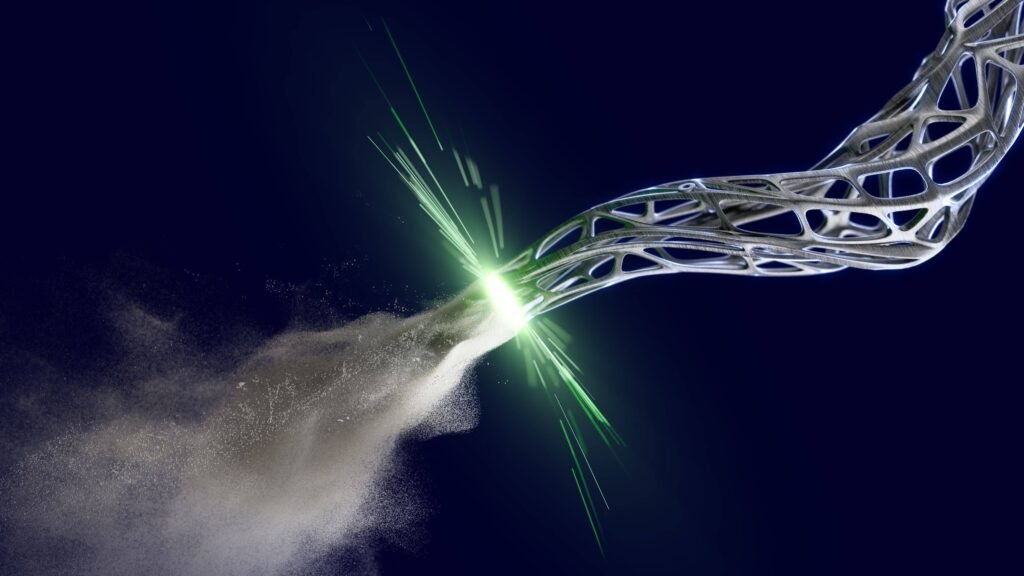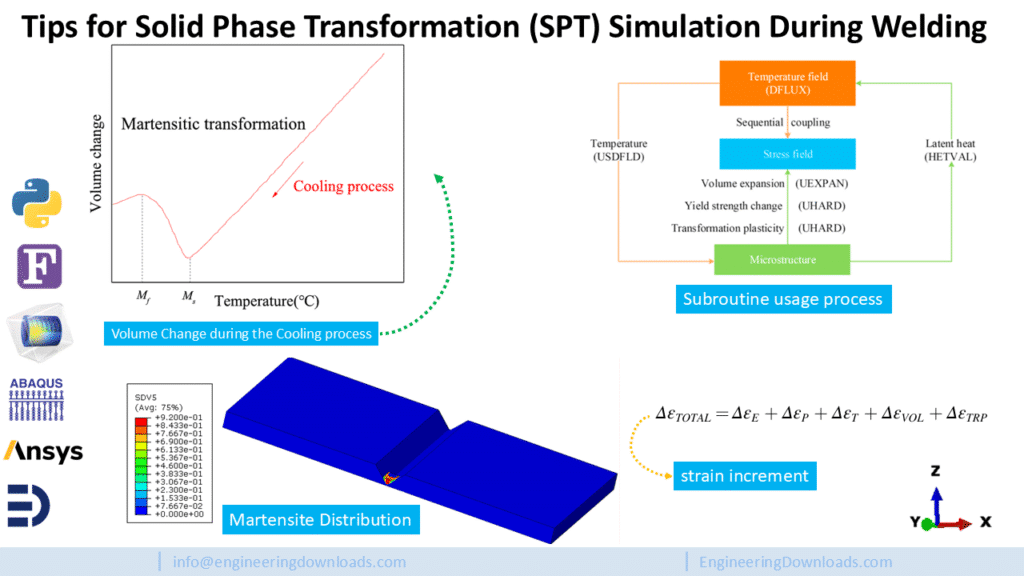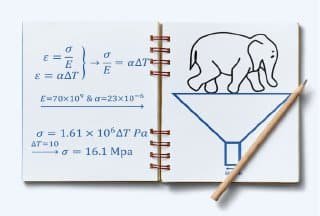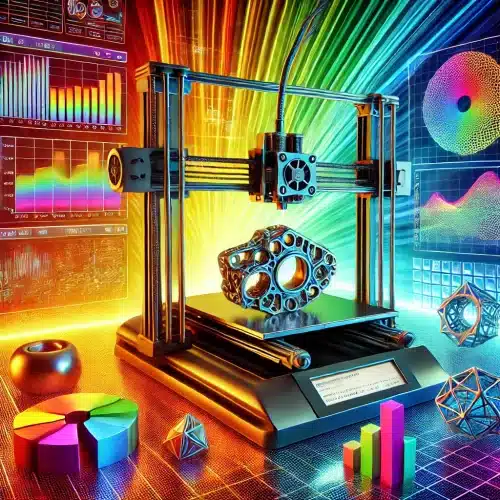Additive Manufacturing & Welding Simulation in FEA: A Comprehensive Guide

Additive manufacturing (often called 3D printing) and traditional welding are both processes that involve melting and fusing material. These processes offer incredible possibilities (from printing intricate medical implants to welding critical oil-and-gas pipelines), but they also introduce challenges like residual stresses, distortion/warping, and complex thermal histories. Finite Element Analysis (FEA) has become an indispensable tool […]
Tips for FEM Analysis of Solid Phase Transformation During Welding

Welding is one of the most critical processes in mechanical and structural engineering. Beyond simply joining metals, it introduces complex thermal cycles, stress fields, and microstructural transformations that can significantly affect the performance of the welded joint. For high-temperature steels like P91, understanding these transformations is essential for predicting residual stresses, hardness distribution, and service […]
Thermal Expansion: Holding bad boys in their prison

Confession Time: I sometimes totally underestimate thermal expansion it looks so innocent on paper! 🤓 Let’s break it down: We’ve all seen that classic formula strain = ΔT × α, where α (alpha) is the material’s “how much do I expand when heated?” number. For aluminum, α is 23e-6 /°C which looks ridiculously tiny, like a […]
Creep Strain vs Stress Relaxation, A practical guide for CAE users

Description Learn what creep is, how temperature and stress control creep life, and which creep models CAE tools (ANSYS, COMSOL, Abaqus and others) use. Simple equations, practical CAE workflows, ASME / code context, and industrial project examples (boilers, pressure vessels, turbines, heat exchangers). What is creep? Creep is permanent deformation that accumulates over time when […]
Additive Manufacturing

Introduction to Additive Manufacturing Additive Manufacturing (AM), commonly known as 3D printing, is a revolutionary approach to fabricating physical objects. Unlike traditional subtractive manufacturing methods, which remove material to shape an object, AM builds parts directly from digital models by adding material layer by layer. This technique allows for the precise control of materials such […]
